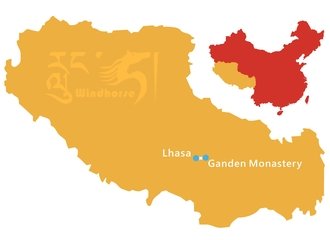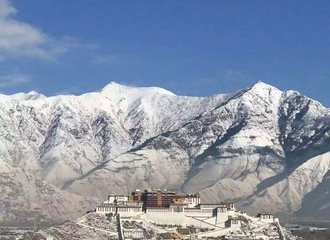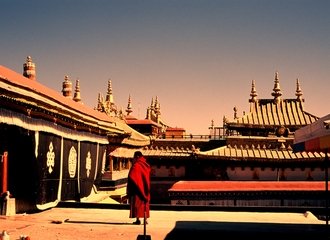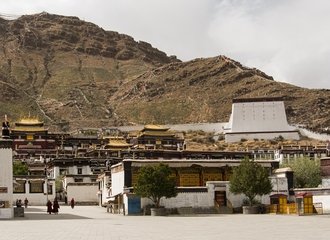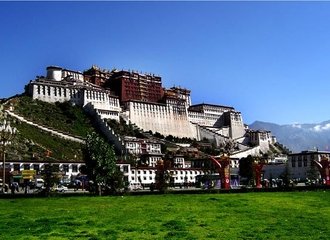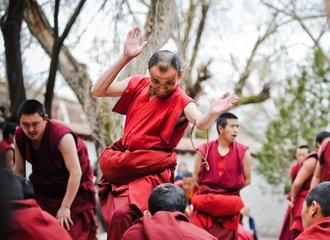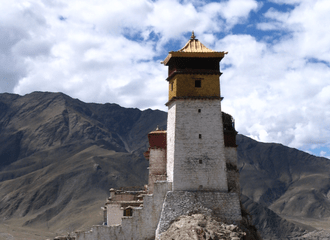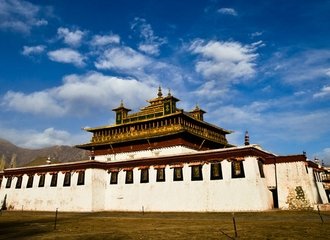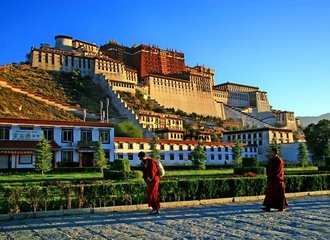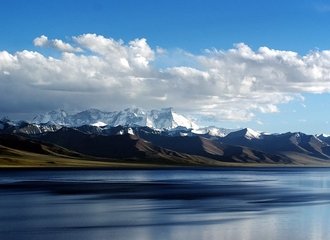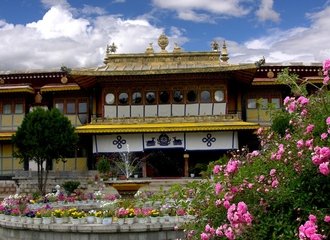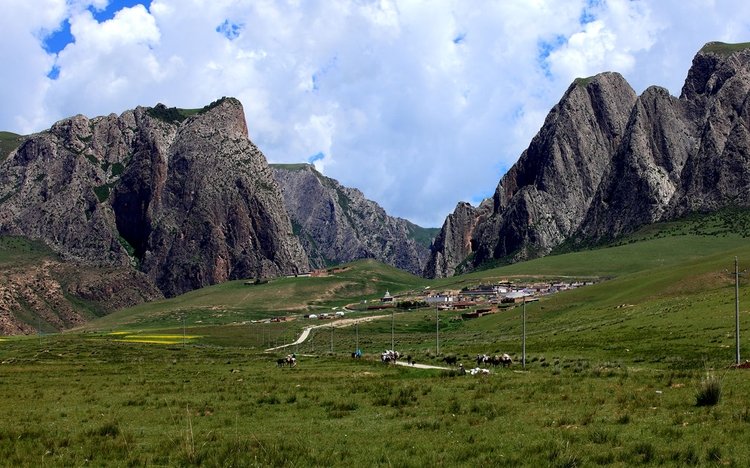



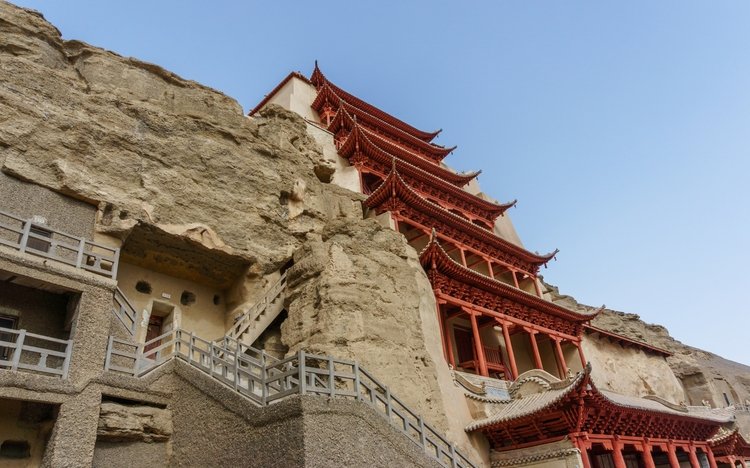

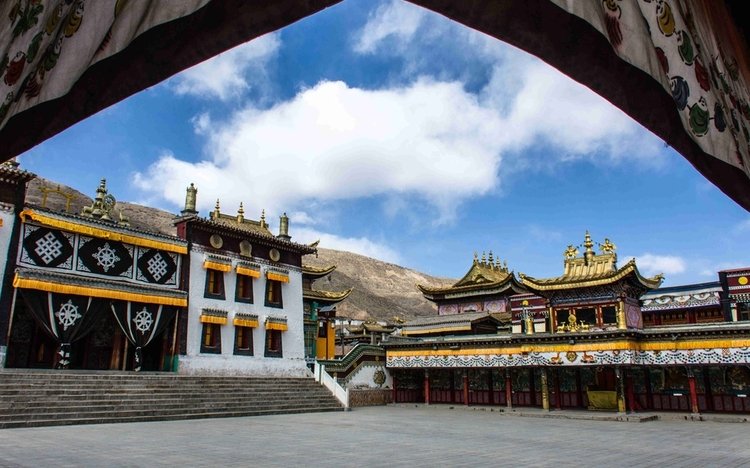
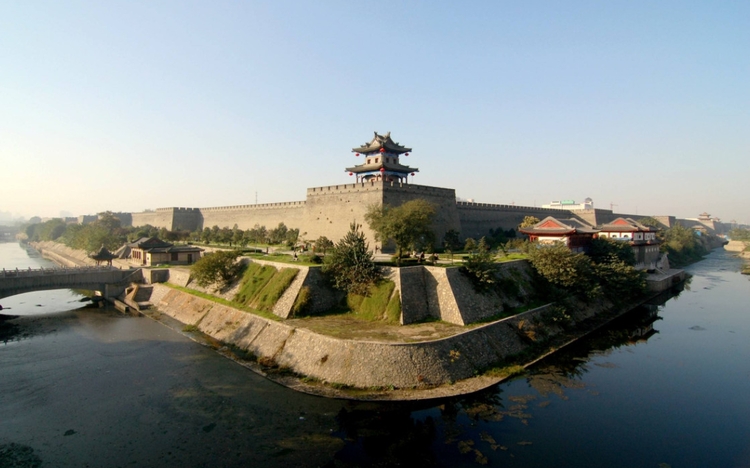
19 days Silk Road in-depth experience
Itinerary
This China Silk Route tour starts with a cultural visit in Beijing, where you will see many classic heritages include the Forbidden City and Great Wall. Next with a travel along the Silk Road from Kashgar to Xi'an. Visit several highlight cities in Xinjiang to explore the Islamic culture and Uyghur lifestyle. Stop at the deserts in Turpan and Dunhuang to discover the relics left by the ancient people. This tour is for the serious travelers that want to gain an in depth understanding of Western China and the regions along the Silk Road.

This Silk Road adventure starts in Beijing, the capital of China. It is designed to provide you a great opportunity to discover the cultural heritages in Beijing and the past civilizations along the ancient Silk Road. Anything in this tour can be easily adjusted to suite your personal travel needs.
As you get settled into the downtown hotel, take time to have a rest or just roam this ancient city on your own. Your local guide will be pleasant to offer suggestions on where to go.

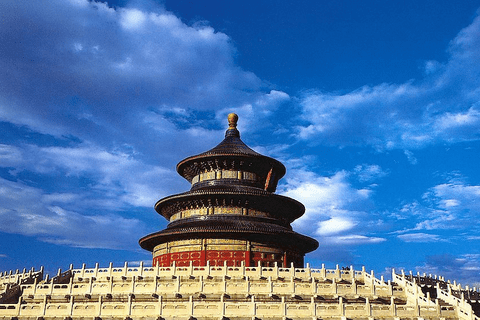
Have a day trip to three remarkable attractions within Beijing city, Tiananmen Square, the Forbidden City and Temple of Heaven. Located in the heart of Beijing, Tiananmen Square is the largest public square in the world, which can accommodate up to a million people to hold ceremonies. Walk around the square and head the north to see a magnificent building, which is called the Gate of Heavenly Peace. Deeply behind the gate lies the Forbidden City, which is the second sight of today's trip. This gorgeous palace served as the workplace for the emperors to cope with political affairs (Outer Court), as well as a living space for royal families (Inner Court) for almost 500 years. While walking along the majestic stone walkways and seeing the complex wooden structures, you can feel the power of both imperial and divine.
After having lunch, visit the Temple of Heaven, a religious place for the emperors in Ming and Qing dynasties to pray to God of Heaven for good harvest. Notice the unique triple-gabled circular architecture, which is regarded as one of the landmarks of Beijing city while wandering in the palace. In the evening, enjoy a traditional Kong Fu Show and return to your hotel for retire..
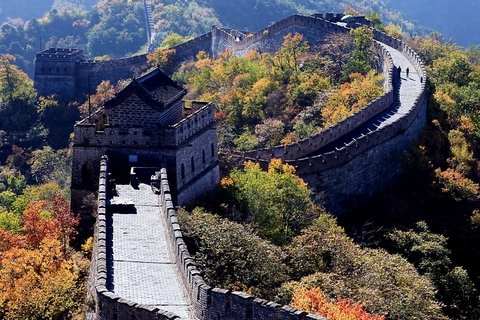

The highlight is coming today as you will visit the famous Great Wall. After breakfast, drive 2.5 hours to the northeast countryside to get to Mutianyu, one of the best preserved section of the Great Wall. Spend 2 to 3 hours to hike along this priceless heritage left by ancient Chinese people. Enjoy the majestic and breathtaking scenery around. You will not believe this great project was constructed without any modern machines or equipment until you learn about some history of the Great Wall from your local guide.
As you drive back from the Mutianyu Great Wall in the afternoon, stop at the Ming Tombs for a couple hours visit. This is the final resting place for 13 emperors during the Ming dynasty and three of them are open to public. You will mainly visit Changling, the largest and best preserved one among the 13 tombs. Afterwards, drive back to your hotel for a rest.
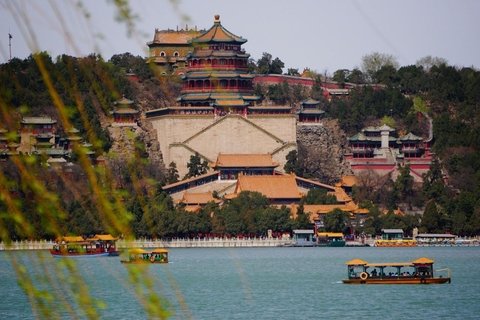

Start today with a visit to the Summer Palace, a royal garden built during the Qing dynasty. Mainly composed of the Longevity Hill and Kunming Lake, Summer Palace indicates an outstanding feature of the North China in terms of both garden design and architectures. Meticulously designed pavilions, shaded alcoves, exquisite stone bridges, your every step in the garden will be filled with surprise.
Afterwards, head to the Shichahai Area for a traditional Hutong experience. See a 300 years old courtyard. Learn about the history, culture and layout of Beijing hutong from your English speaking guide. Talk with the local housekeepers to gain direct insight to these historical places. Do all this while experiencing the life of local Beijingers by taking the rickshaw through the Hutongs. After you are dropped off at the Silver Ingot Bridge (Yinding Bridge), walk along the old Tobacco Pipe Lean Street (Yandai Xiejie) which has over 800 years history, and stop at the Drum Tower to witness the surrounding Hutongs and traditional courtyards from an aerial view.
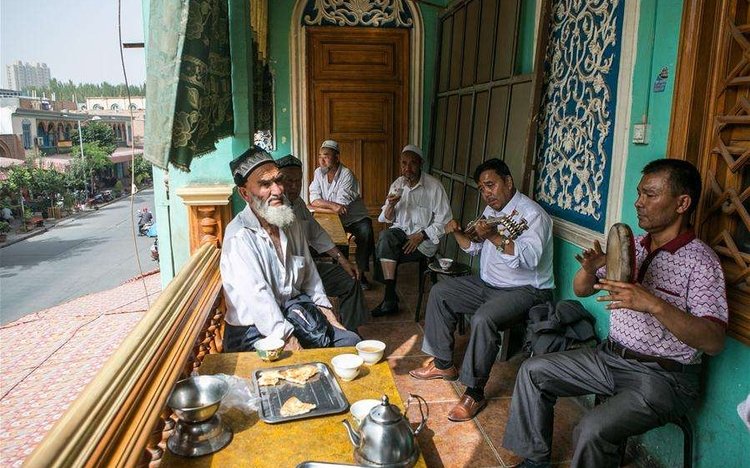
This morning, your guide pick you up and drive you to the airport for taking the flight to Urumqi, the capital of Xinjiang province. Upon arrival, transfer to the flight to Kashgar, an oasis city in the western extremity of China, bordering on Tajikistan and Kyrgyzstan. This city is regarded as one of the best place to explore the custom of Uyghur people in China. Get settled into the hotel after you arrive in Kashgar, and prepare for the next day.
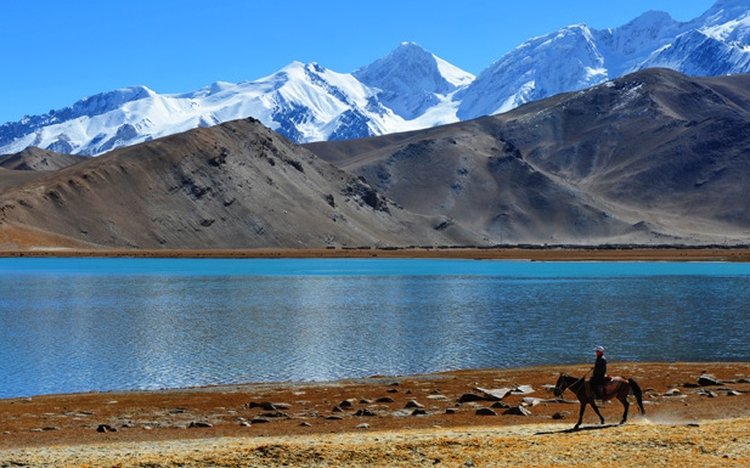
After several days of visiting the cultural heritages, today you will have a great opportunity to get close to the nature. Leave for the enchanting Karakul Lake after breakfast. Drive along the Sino Pakistan Karakorum Highway and stop at the Opal Village for a short break before you enter the Kunlun Shan Mountain range, one of the last truly unexplored places on earth.
It will take about 4 hours to get to the Karakul Lake, however, it will not make you sleep because of the surreal glacier scenery along the way. Once you arrive at the foot of Mount Muztagata and see the pure water of Karakul Lake, spend the rest of the day to immerse yourself into the awe inspiring scenery and completely forget about the bustling life in modern city. You can choose to walk or ride a horse on the grassland with roaming flocks and herds along the shore of the lake. Visit a local Kyrgyz family to experience their customs and culture. In the late afternoon, drive back to Kashgar and prepare for your next day.

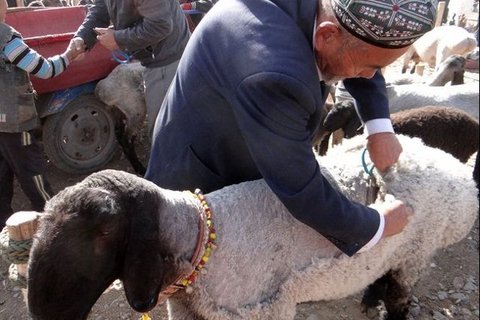
You will stay in Kashgar city to explore the unique Uyghur culture today. The first stop is the Apak Hoja Tomb, an Islamic holy mausoleum which buried five generations of the Apak Hoja family, including what is purported to be the body of Xiang Fei, a famous concubine in Qing Dynasty. This place is a typical Islamic architecture as you will see the pillars were decorated beautifully and designed perfectly.
Where is the best place to learn about the lifestyle of locals? Obviously the answer is the market. Sunday Market is the most famous one in Kashgar as it attracts numerous merchants from all over Xinjiang and nearby countries such as Pakistan plus Kirghizstan. Spend one or more hours to roam this bustling market to see many small shops for selling numerous commodities, traditional scarves, leathers, clothes, and souvenirs.
The last sight today is the Id Kah Mosque, the largest and busiest Islamic mosque in China. This old Islamic architectures presents a strong ethnic style and religious features. Afterwards, stay in the Old Town of Kashgar to experience the local daily life. This evening you will drive to the airport for the flight back to Urumqi.

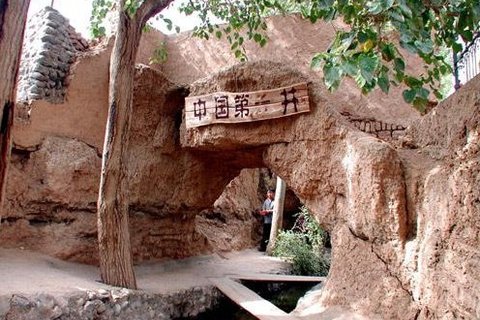
Drive to Turpan, an oasis city southeast of Urumqi in the morning and see the largest wind power station of China along the highway. After 3 hours drive you will get to Turpan, spend the rest of the day to visit three highlights of this city, Sugong Pagoda, Karez Well and Jiaohe Ruins. Standing at a height of 44 m. (144 ft.), Sugong Pagoda is one of the most famous Muslim tower in China. Its unique architecture features a strong Islamic architectural style, and is made up totally of bricks. Afterwards, head to the Karez Well, one of the three great ancient projects in China. These wells are made up of vertical wells, underground canals, above-ground canals and small reservoirs. They were built by the ancient Turpan people about 2,000 years ago to solve the water shortage of this city. During your stay in the underground canals, you will find this place is also a perfect escape from the intense heat of Turpan.
In the late afternoon, drive to the Jiaohe Ruins, which is currently the largest and oldest earthen city in the world. The remains you see today was descended from the Tang Dynasty. Because of the high location and dry climate, most of the buildings in the city are well preserved. By visiting here and learning from your local guide, you will have an understanding of the past civilizations along the Silk Road.
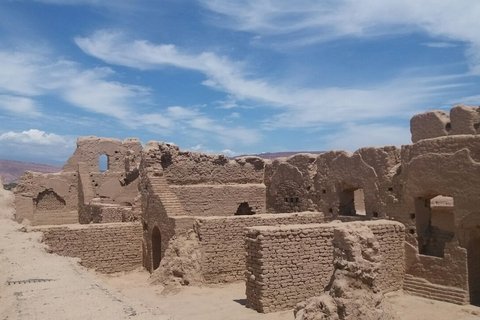
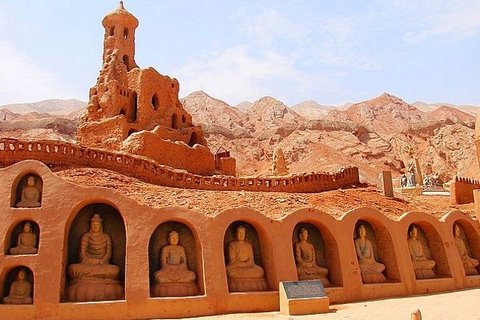
This morning you will visit another ancient city in Turpan, Gaochang Ruins, which is an important stop on the Gobi desert along the ancient Silk Road. Many buildings were collapsed after thousands of years' wind erosion. However, you will still clearly recognize the temple, sermon house and courtyard. Feel the past magnificence of this city. Next with a visit to the Bezeklik Thousand Buddha Caves. Located on the west cliffs of the Wood Valley of the Flaming Mountains, this place is one of the best to learn about the development and history of the Buddhism in this region. Admire the colorful murals and other precious art works here before you head to the Flaming Mountains where the temperature on the surface reaches 47.8 C (118.04 F) in the hottest summer, hence the name.
This noon you will have a traditional Uyghur lunch in a local village of Tuyuk Valley. Afterwards, drive back to the train station of Turpan and say farewell to your local guide. You will take a soft and comfortable overnight train to your next destination, Dunhuang.

Arrive at the Liuyuan train station this morning, then transfer to Dunhuang and get settled into the hotel. This morning is left free for you to wash up from the train ride. After having lunch, you will start the trip in Dunhuang.
The first destination is the Mingsha Hill, where you will see the boundless sand dunes. As its name indicates, the sand in here echoes when wind blows or when you slide down the slope of the mountain. Have a camel riding to the Crescent Spring, a lake in the desert which got its name from its unique shape forming the crescent naturally. In the evening, have a memorable experience of enjoying the magnificent scenery of the sunset in the desert. Then drive back to your hotel for retire.


Drive about one hour to visit the noted Mogao Grottoes in the morning. Admire numerous exquisite murals and Buddha statues here, most of which have a history of more than 1,500 years. This site is renowned as one of the most precious treasure of Buddhist art in China and even the Asia. After, follow the trade route of ancient Silk Road and drive to your next stop, Jiayuguan. Upon arrival, get settled into the hotel and prepare for the next day.

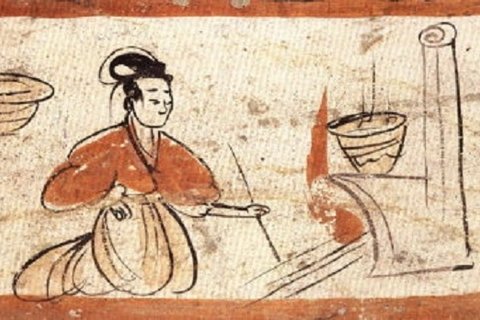
Also known as the Greatest Pass under Heaven, Jiayuguan Pass is renowned for its Great Wall, which is regarded as the western end of the Ming dynasty Great Wall. This morning you will head to the remaining wall and pursue the past magnificence of this military fortress. Walk to the west as you get to the First Fire Tower. Standing at a height of 56 m. (184 ft.) on the cliff of the Gobi desert, this tower was used to send signals during the wartime.
Next you will go to the Wei-Jin Art Gallery, which is a huge group of more than 1,400 tombs built between the 3rd and 5th century. Known as the largest underground art gallery in the world, this place houses a large number of precious brick murals which present the unique culture during the Wei and Jin dynasties. In the afternoon, drive to the train station for the overnight train to Lanzhou, the capital of Gansu province.
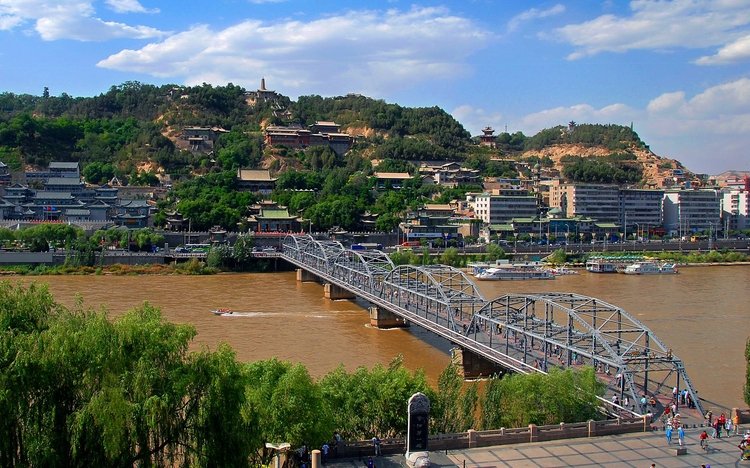
Arrive in Lanzhou this morning, then your guide will assist you to transfer to Xiahe, a county located about 4 hours drive from Lanzhou. As you get to Xiahe and register into your hotel, have the rest of the day to explore this city on your own. Tomorrow morning you will start visiting the highlights in Xiahe.


Labrang Monastery is the first destination of the tour today. This is one of the six largest Tibetan Buddhism monasteries in China. Unlike the Buddhism you learn from the Mogao Grottoes, Tibetan Buddhism is a unique sect that holds numerous followers in Tibet and many other regions. Labrang Monastery was built based on the Tibetan architectural style, which houses a large collection of Buddhist statues, sutras and murals. You will have a knowledge of the Tibetan Buddhism during your visit here.
Afterwards, the Sangke Grassland is waiting for you to discover its beauty. The grassland got its name from the summer-blooming songke flowers. These colorful flowers and green grass form a natural carpet extending to the horizon. Daxia River travels through the grassland, resembling an undulating silk belt that reflects the blue sky and snow capped mountains. During your stay on the grassland, visit a Tibetan family to taste the traditional Tibetan food and learn about the unique custom.
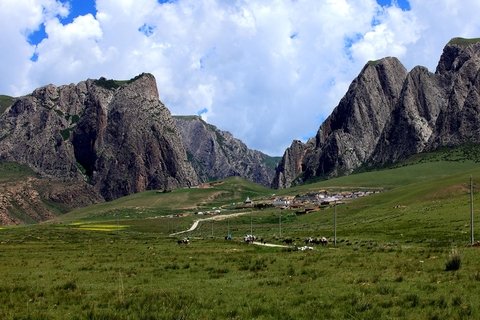
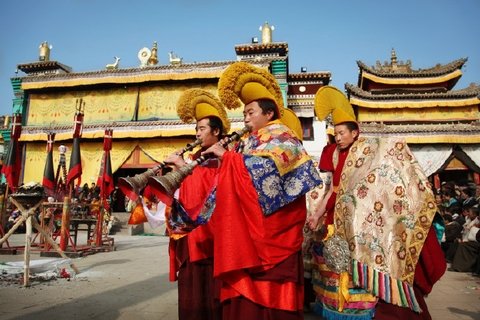
Continue the journey along the Silk Road today as you will drive to Tongren, a city about 110 km. (68 mi.) away from Xiahe. The drive takes over 3 hours, stop at the Ganjia Grassland to enjoy its breathtaking scenery and visit some Tibetan nomads. Learn about their culture and customs to compare it with the Islamic culture in Xinjiang, both of which are two minorities in China.
In the afternoon, visit the Thangka Artists Village and Upper Wutun Monastery. Thangka is a Tibetan silk painting with embroidery, usually depicting a Buddhist deity. During your visit in Thangka Artists Village, see numerous beautiful thangkas and learn how to draw them. Next up head to the Upper Wutun Monastery, a classically styled temple which is filled with ancient Tibetan treasures. Even though it is not in Tibet, you will still find out the Tibetan architectural style at every corner of this monastery.

Have a visit to Rongwu Monastery, another Tibetan Buddhist monastery of Tongren in this morning. After lunch, drive through many breathtaking grasslands to Xining, the capital of Qinghai province. The drive will take over 3.5 hours, upon arrival, be met by your local guide and assisted to check in the hotel.

Visit Kumbum Monastery this morning before you fly to Xi'an. Located 27 km. (18 mi.) southwest of Xining downtown, this monastery is considered as one of the two most important Tibetan Buddhist monasteries outside the Tibet. Local people and many Tibetan Buddhists believe that the monastery was originated from a pagoda that marked the birthplace of Tsong Kha-pa, the founder of Gelukpa Sect in 1379.
In the afternoon, drive to the airport for the flight to Xi'an. Upon your arrival, be assisted by your local guide to register in the downtown hotel. The rest of the day is left free for you to prepare for the next day in the hotel.


As one of the most famous ancient capitals in China, Xi'an holds a large number of cultural heritages. Today you will spend the whole day to visit three of them. The first one is the noted Terracotta Warriors, located in the east countryside of Xi'an city. Renowned as one of the Eighth Wonder of the World, the find of Terracotta Warriors in 1970s could be one of the most significant archeological excavations of the 20th century. More than 10,000 life size terracotta figures of warriors and horses were excavated to reveal the burial secret of Qin Shi Huang, the first emperor of China.
In the afternoon, drive back to the downtown of Xi'an to visit the Big Wild Goose Pagoda. As the symbol of the old-line Xi'an, this pagoda is a well-preserved ancient building and a holy place for Buddhists. You will climb to the top of the pagoda and have a bird eyes view of Xi'an city. Next with a walk on the Xi'an City Wall, the oldest city wall in China. Then return to your hotel for retire.

The memorable Silk Road experience comes to an end today. Your guide and drive will pick you up from the hotel and drive you to the airport or train station for departure this morning. If you wish to continue your travels, we are experts in tailor made trips and ready to assist you in extending your stay in China.


